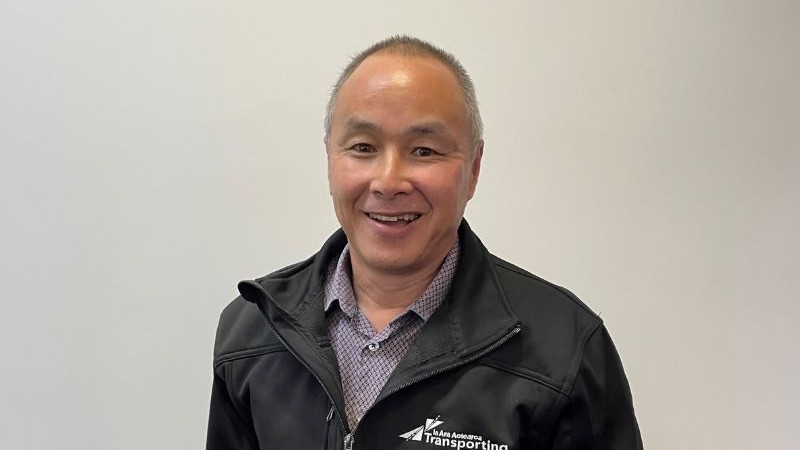
It’s been another busy week. Highlights included our last board meeting for the calendar year and our AGM, more progress with constitutional reform, a general meeting of livestock members, and presenting a certificate to the latest driver to complete the driver traineeship on the Road to success qualifications pathway.
The board meeting and AGM were great opportunities to reflect on what we have achieved this year. In terms of business as usual, we are still well positioned as the primary communicator for our industry through mainstream media.
We’ve made formal submissions on a wide range of issues, including tyre standards, roading changes, EV charging strategy, work-related diseases, working conditions at ports, and regional speed management plans. Our members’ expertise and technical knowledge has been invaluable in preparing these submissions – and it has made a difference.
An excellent demonstration last week was Waka Kotahi’s proposed change to the dual-lane section of SH1 northbound leaving Timaru. On the face of it, the proposal looked pretty straightforward and sensible. However, when our advisor Jim Crouchley and local members met with Waka Kotahi’s consulting engineer on site, they observed and explained the unusual behaviour of cars and trucks as they approached the choke point in the current double lane section. That meeting was so effective that a decision was quickly reached to stop the proposal. If it hadn’t been for that local knowledge, as well as good relationships with key stakeholders and our advocacy and intervention, it’s almost certain there would have been not only more vehicle collisions, but also more severe ones.
Our commercial offers have expanded during the year to better meet the challenges our industry is facing, whether that be in regard to health and safety or financial management.
Two other highlights that nicely bookended the year were the formal launch of the Green Compact and last month’s launch of the Diversity Toolbox.
There has also been greater collaboration across the supply chain.
Here are two examples.
Last week, I attended the Log Transport Safety Council (LTSC) meeting in Rotorua. Key to success for transport operators is a pan-industry collaborative approach, which includes operators, researchers, trailer manufacturers, and forest owners. That pan-industry approach is important because when new opportunities for improvements arise, the whole supply chain shares responsibility for implementing them. The introduction of an Operator Accreditation system is a brilliant example of what can be achieved with this approach.
In a similar vein, but not at the same level of maturity yet, is the ground being made in the livestock sector. About two years ago, we undertook a piece of work that demonstrated that much of the stress on livestock operators was caused by the behaviour and influence of other parties in the supply chain. Another unfair aspect was that transport operators ended up wearing the thick end of penalties and offences, even though other parties in the supply chain had contributed to them. This led to the establishment of the Livestock Supply Chain Rōpū, which in essence is a pan-industry approach similar to LTSC.
On Wednesday, we hosted a general livestock operator meeting, which also included our fellow advocacy organisations NRC and NTA. We wanted to engage with transport operators in the rural sector and gain a consensus on policy priorities and operational issues for the next 12 to 18 months, and also on how the sector is represented.
About 40 people attended – a good indication of how important this is to operators. We came away with a prioritised timetable of clear deliverables, and more importantly, a communications strategy, particularly in regard to stakeholder engagement. This underscored the importance of engaging with the appropriate parties that can influence the supply chain to resolve the challenges our industry is facing.
In my view, transport operators cannot continue to be the party doing all the heavy lifting and be the ones left holding the can; a sector-led pan-industry approach is the best way forward.
We have heard about another potential heavy vehicle accreditation system being rolled out. Various reports have referred to that work being government-led and others have indicated it is “industry” leading it.
As a major representative of transport operators, we have asked to be involved in that work and for details on the plan and any work done to date on it. We think our members should have a good understanding of what’s in the pipeline, particularly if government is supporting it, so watch this space.
Late this week I had the pleasure of joining Verna Niao, executive director at MITO, at KAM Transport to present certificates to Helene Jensen-Selkirk. Helene recently completed the driver traineeship qualification on Road to success. Road to success is a pathway involving nationally recognised certificates of competency, be they unit standards or micro-credentials that provide an inherent level of transparency.
These are part of another important strategic shift in our sector’s thinking. Traditionally, our industry has typically seen this kind of programme as training, more driven by meeting a compliance obligation – however, a subtle but important shift is that we now think of this more as investing in workforce development. More progress has been made in this space over the past year and I’m very grateful and appreciative of all the operators like KAM, which have continued to support their workers with this initiative.
Finally, on a more sobering issue, men will die on average 4.5 years earlier than women and for reasons that are largely preventable, which means that it doesn’t have to be that way. Here are five ways you can give yourself the best chance at living a healthy and long life: nz.movember.com/mens-health/general.
By Dom Kalasih, Ia Ara Aotearoa Transporting New Zealand.





